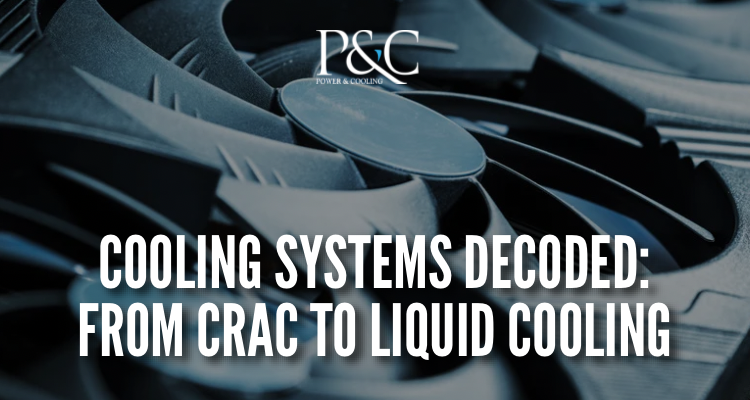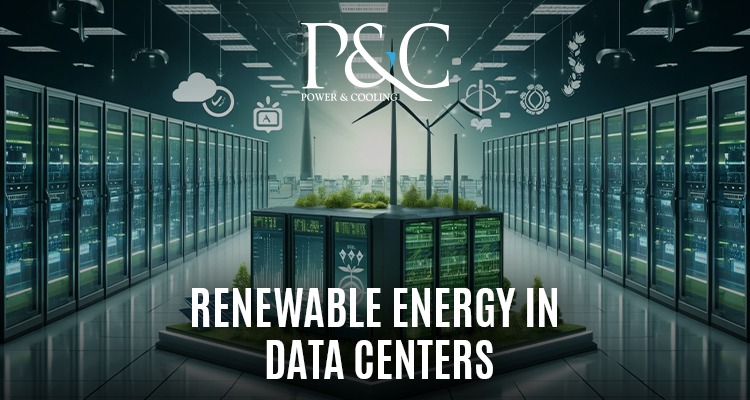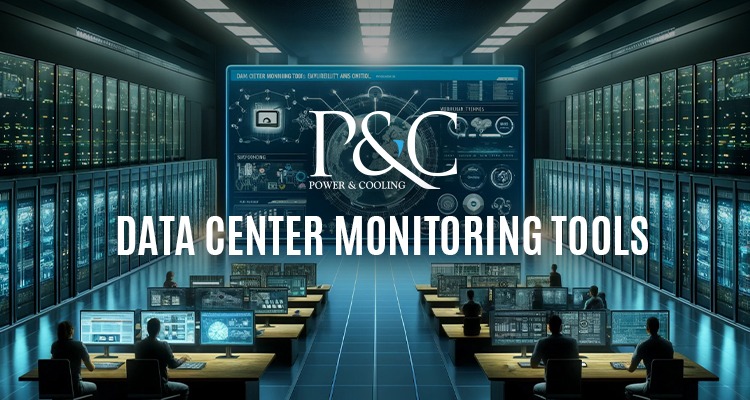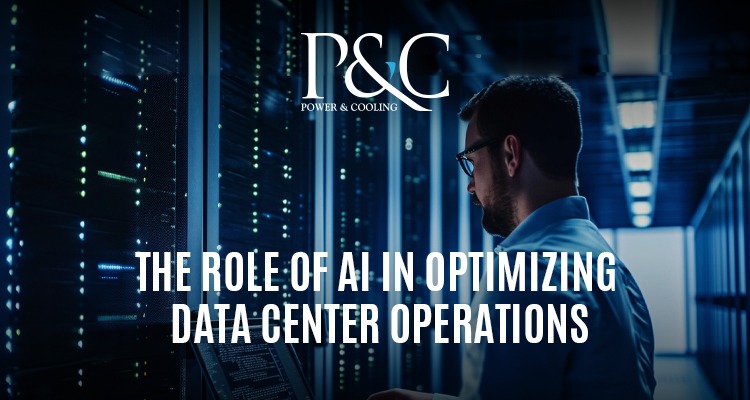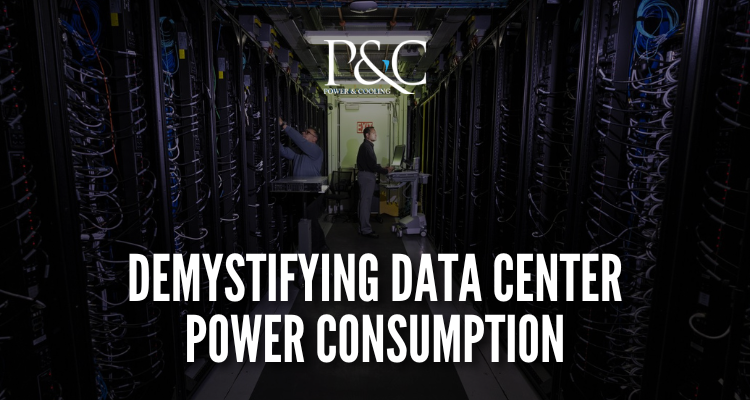Data centers are the backbone of the modern digital world, ensuring that our data is stored securely and accessible whenever needed. However, these data centers generate a significant amount of heat due to the high volume of electrical equipment in use. This heat needs to be effectively managed to prevent equipment failure and maintain efficiency. This blog explores the various cooling systems employed in data centers, their pros and cons, and highlights P&C’s expertise in providing advanced cooling solutions through real-world case studies.
Introduction to Data Center Cooling Systems
Data centers are essential to our global IT infrastructure, growing larger and more complex by the day. They are pivotal in the digital economy, hosting the essential servers and hardware that drive our online world. A crucial aspect of their operation is cooling systems, which are designed to dissipate the heat generated by servers, storage systems, and networking hardware. This heat arises from the conversion of electrical to thermal energy due to inefficiencies in electronic components. Maintaining optimal environmental conditions, as recommended by ASHRAE (18°C to 27°C temperature range and 40% to 60% humidity), is vital for the functionality and longevity of IT equipment. Cooling systems ensure the efficient removal of heat while managing humidity levels to prevent static electricity and condensation, which can damage electronics.
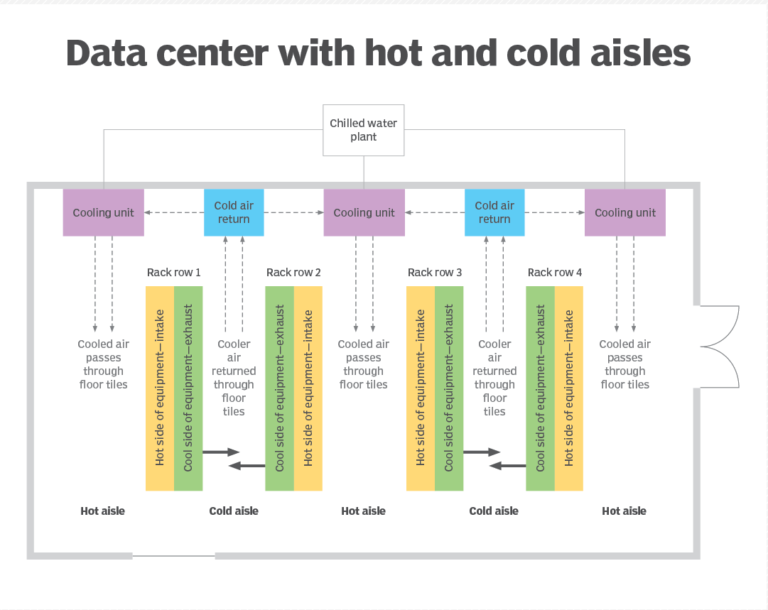
Exploring Different Types of Cooling Systems
Data center cooling systems have evolved significantly, with technologies ranging from traditional CRAC (Computer Room Air Conditioning) units to advanced liquid cooling solutions.
CRAC units are specialized air conditioners equipped with humidifiers to manage the air temperature and humidity around servers.
CRAC Units
Evolved from traditional cooling methods, CRAC units work by extracting hot air and circulating cool air, much like a standard air conditioning unit. They also monitor and control air distribution and humidity within the server room. The cooling process involves pumping cool air through perforated floor tiles between the racks, where it is then drawn in by the servers. The warm air expelled by the servers is subsequently recaptured by the CRAC units to be cooled once again.
CRAH units
Computer room air handler (CRAH) units are another data center cooling device. The main difference between CRAH and CRAC units is how they cool their surrounding environments.
CRAC units use both refrigerants and compressors, while CRAH units use chilled water and control valves. CRAH units use fans to blow air over cooling coils. Instead of the coils being filled with refrigerant, however, they’re filled with chilled water. Warm air from the data center room is drawn back into the CRAH unit, passing over the chilled water coils. The heat transfers from the air to the water, where the water then returns to a chiller.
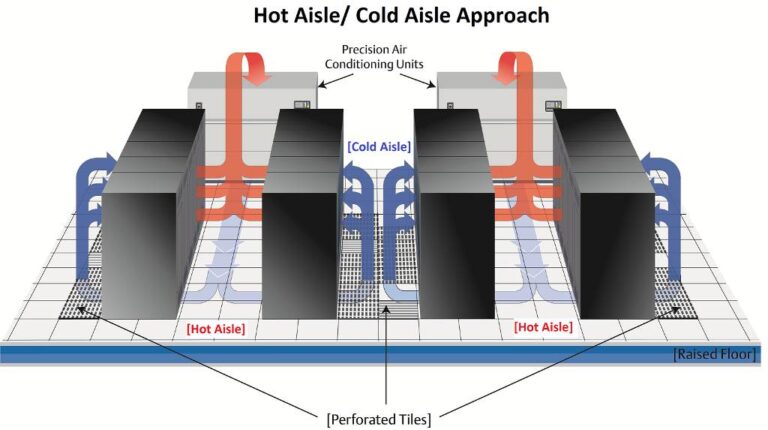
Advantages of Air Cooling:
- Established Technology: Air cooling systems like Computer Room Air Conditioning (CRAC) units are widely used and understood within the industry.
- Flexibility: Solutions such as in-row and in-rack cooling offer targeted air circulation, adapting to various data center architectures.
- Evolution: Over the years, air cooling technologies have become more efficient, especially when combined with strategies like hot- and cold-aisle containment.
Disadvantages of Liquid Cooling:
- Limited Effectiveness: Air is not as effective a heat transfer medium as liquids, which can become a significant issue as rack densities increase.
- Space Constraints: High-density setups mean there’s less room for the large fans air cooling systems rely on, limiting their effectiveness.
- Energy Consumption: The costs associated with air cooling, especially in high-density environments, can be substantial due to its lower efficiency compared to liquid cooling options.
Liquid Cooling
Liquid cooling represents a groundbreaking approach in the data center cooling domain. Unlike air-based systems, liquid cooling involves the direct use of a coolant to absorb and dissipate heat from data center components. This method offers superior heat transfer efficiency, leading to significantly lower energy consumption and enhanced cooling performance.
Liquid cooling directly targets the heat generation sources with cooling fluids, offering more efficient heat removal.
Direct Liquid Cooling (DLC) and Immersion Cooling
Two main types of liquid cooling have emerged as frontrunners: Direct Liquid Cooling (DLC) and Immersion Cooling.
- Direct Liquid Cooling (DLC): DLC systems involve the circulation of coolant through cold plates or microchannels directly attached to heat-generating components. This targeted cooling ensures optimal thermal management for individual components, enhancing overall system efficiency.
- Immersion Cooling: This innovative approach involves submerging data center components in a non-conductive liquid. The liquid absorbs heat directly from the components, eliminating the need for traditional heat sinks and fans. Immersion cooling not only offers superior cooling efficiency but also significantly reduces noise and component wear.
Advantages of Liquid Cooling
Liquid cooling systems offer numerous advantages over traditional air-cooled approaches:
- Enhanced Cooling Efficiency: Liquid has a higher heat capacity than air, enabling more effective heat absorption and dissipation. This results in lower operating temperatures, even in high-density configurations.
- Energy Savings: The increased cooling efficiency translates to significant energy savings, reducing the operational costs of data centers.
- Reduced Environmental Impact: By optimizing energy use, liquid cooling contributes to lower carbon emissions, aligning with global sustainability goals.
- Scalability and Flexibility: Liquid cooling systems can be easily scaled and adapted to meet the evolving demands of data centers, supporting future growth and technological advancements.
Disadvantages of Liquid Cooling:
- Higher Initial Costs: The upfront investment for liquid cooling systems can be significant, especially when retrofitting existing data centers.
- Infrastructure and Training: Implementing a liquid cooling system often involves substantial changes to the data center’s infrastructure and requires specialized staff training.
- Perceived Risk: Concerns about leaks and the potential for equipment damage can make some IT teams hesitant to adopt liquid cooling solutions.
Pros and Cons of Various Cooling Methods
Each cooling method has its unique advantages and challenges.
CRAC units, are relatively straightforward to implement and are effective in a wide range of settings. However, they can be less energy-efficient compared to more modern solutions and might require significant space and infrastructure.
Liquid cooling systems, while highly efficient and capable of reducing the data center’s PUE (Power Usage Effectiveness), involve a more complex setup and maintenance due to the need for specialized coolant and handling of the liquid medium.
P&C’s Expertise in Advanced Cooling Solutions
At P&C, we specialize in tailoring cooling solutions to meet the specific needs of our clients’ data centers. Our expertise encompasses both traditional CRAC units and innovative liquid cooling systems, ensuring optimal performance and energy efficiency.
We leverage advanced solutions like in-row and in-rack cooling for targeted heat removal and employ containment strategies to prevent hot and cold air mixing, optimizing the efficiency of our cooling systems.
Case Studies: Effective Cooling in Action
A standout example of liquid cooling’s potential comes from a case study involving a data center using enclosed, immersed, direct liquid-cooled servers. Conducted at the University of Leeds, this study revealed significant energy savings and efficiency improvements. The data center utilized Iceotope’s immersion cooling technology, showcasing a partial Power Usage Effectiveness (PUE) of 1.14, markedly lower than traditional air-cooled systems, which typically achieve a PUE of 1.5 or higher. This case exemplifies how advanced cooling solutions can drastically reduce energy consumption and enhance data center sustainability.
The evolution of data center cooling technologies underscores the industry’s commitment to operational efficiency and sustainability. As data centers continue to support our increasing reliance on digital infrastructure, the importance of effective and efficient cooling systems cannot be overstated. Whether through traditional CRAC units or advanced liquid cooling methods, the goal remains the same: to maintain the optimal operating environment for critical IT equipment, ensuring reliability and longevity. At P&C, we remain at the forefront of this evolution, offering advanced cooling solutions that meet the diverse needs of modern data centers.

